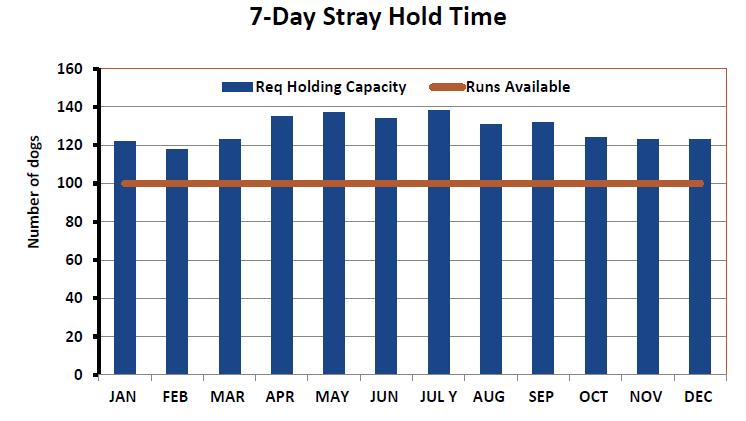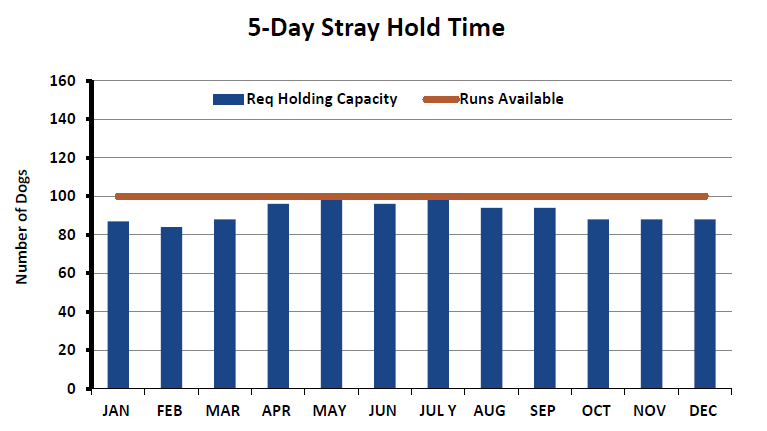Module 6: The Case of the Overwhelmed Shelter
Holding Capacity
HOLDING CAPACITY is the minimum number of housing units required for housing stray dogs and cats in municipal shelters. Many counties in each state have laws or ordinances that dictate the number of days stray dogs and cats must be held in the municipal shelter before they can be dispositioned to an outcome. This is called the “stray hold” time and this actually represents the minimum LOS for each stray. The stray hold time provides an opportunity for the stray animals to be reclaimed by owners. Once the stray hold time expires, the shelter becomes the owner of all unclaimed animals. At this point, the animals can be put into a pathway for release (adoption, transfer, euthanasia).
The holding capacity is determined by the stray hold time (required LOS for strays) and the number of stray animals admitted each month. Here is the formula for calculating the holding capacity:
Holding capacity = [# stray animals admitted/month] X [# days required for stray hold] ⁄ [30 days per month] = # housing units required
Test Your Knowledge
Here is a graph of the required holding capacity calculations for stray dogs entering a shelter each month based on a 7-day stray hold time. The blue bars represent the required holding capacity or minimum number of runs needed each day based on the month (number of stray dogs admitted each month X 7-day hold per dog/30 days). The red line represents the number of runs available for housing one stray dog each (100 runs).

What can the shelter do to stay within the available housing capacity for stray dogs? Build more runs? Increase the stray hold time? Decrease the stray hold time?
Here is a graph of the required holding capacity calculations for the same number of stray dogs entering the shelter but the stray hold time is reduced to 5 days.

Still want to build more runs? Reducing the stray hold time by just 2 days allows the shelter to stay within the housing capacity available for stray dogs without changing the number of dogs admitted each month.

